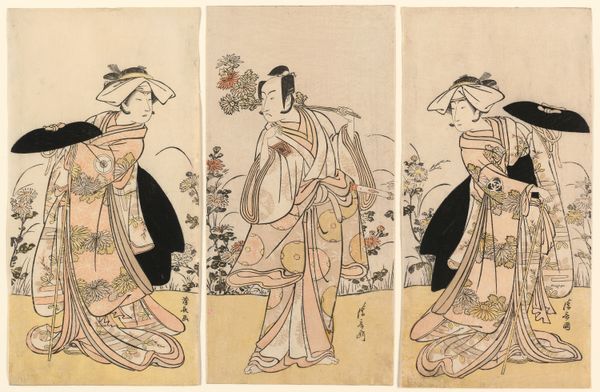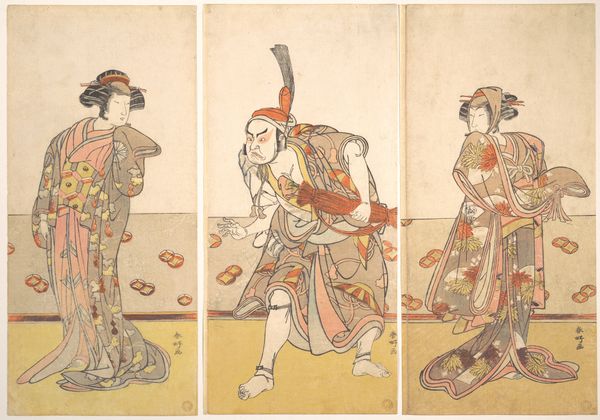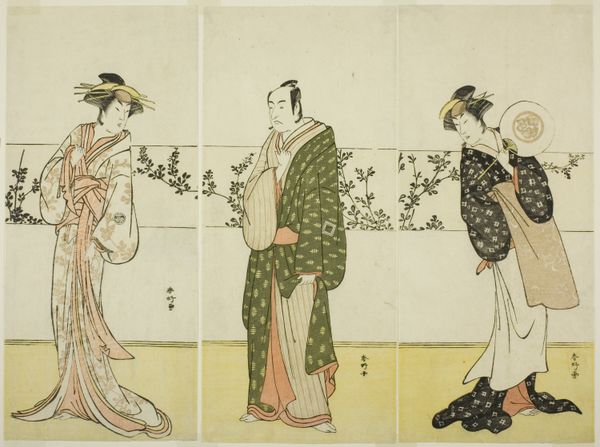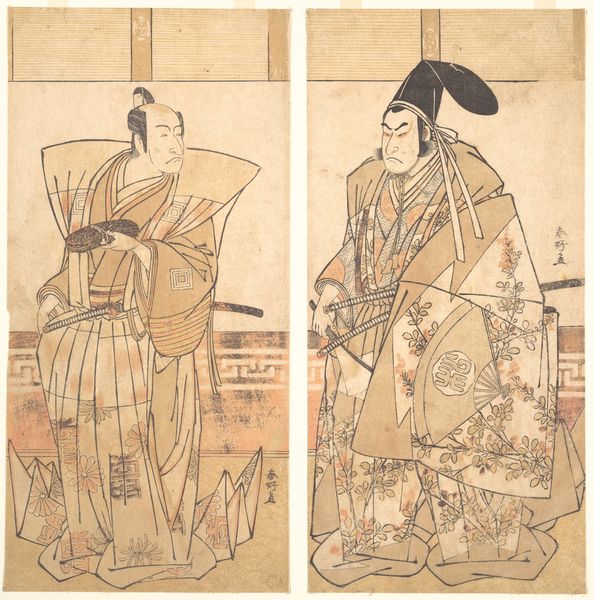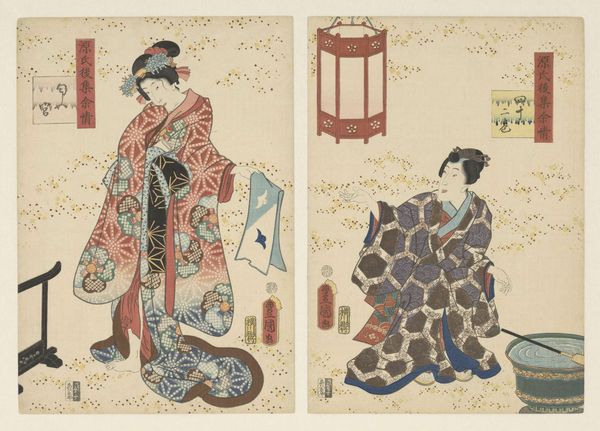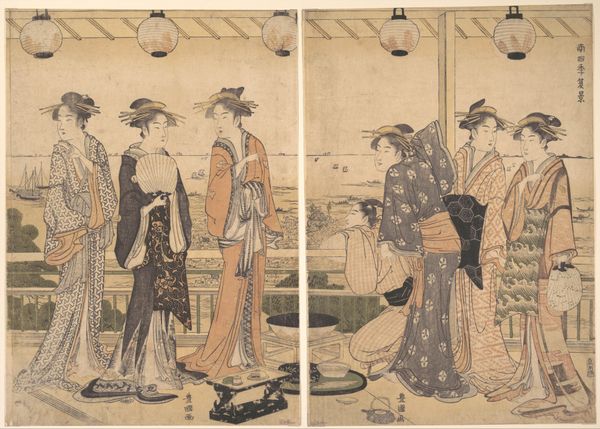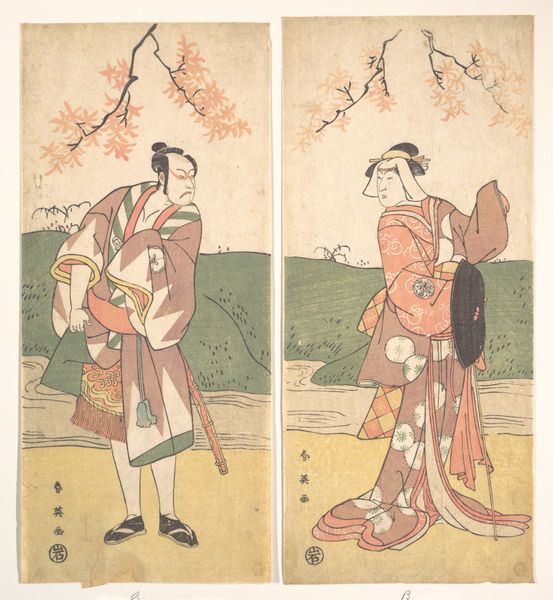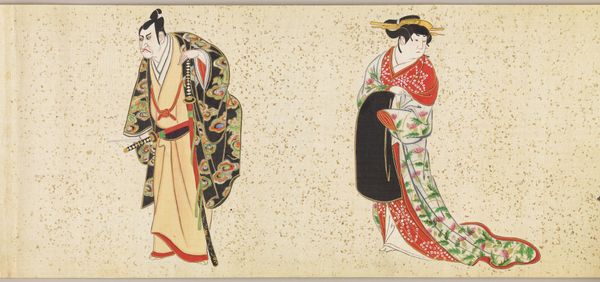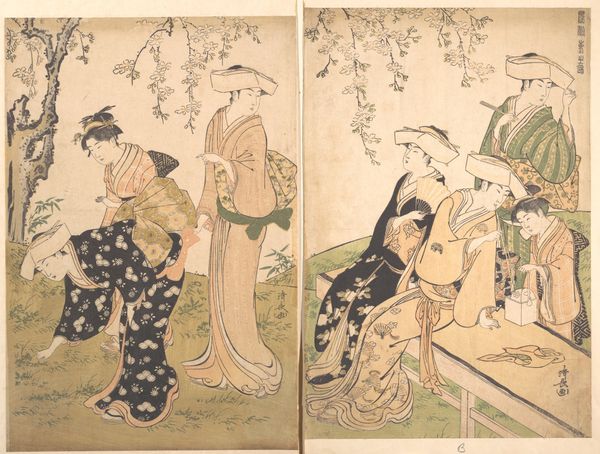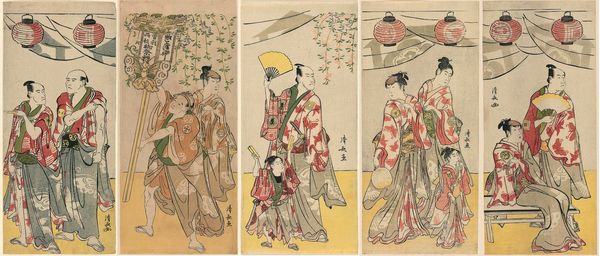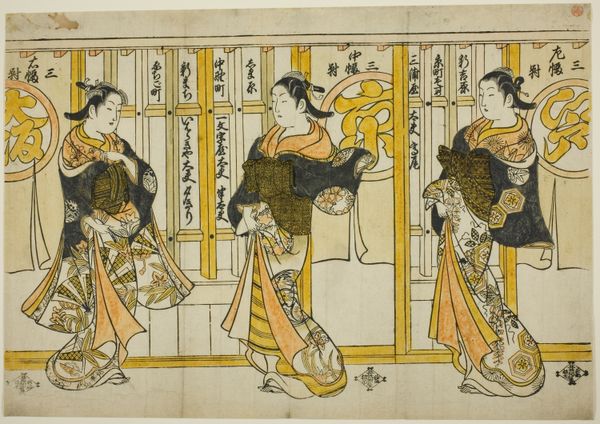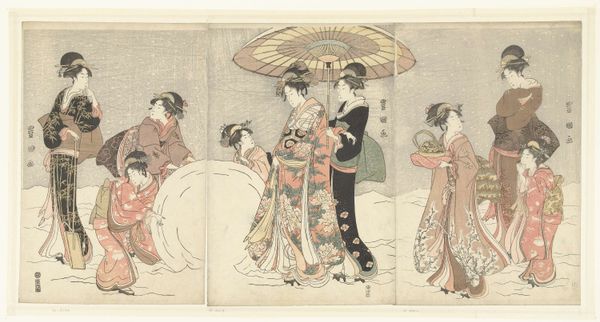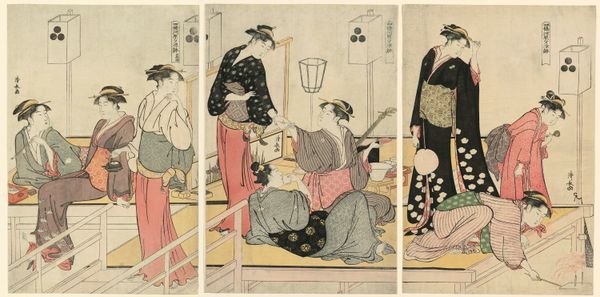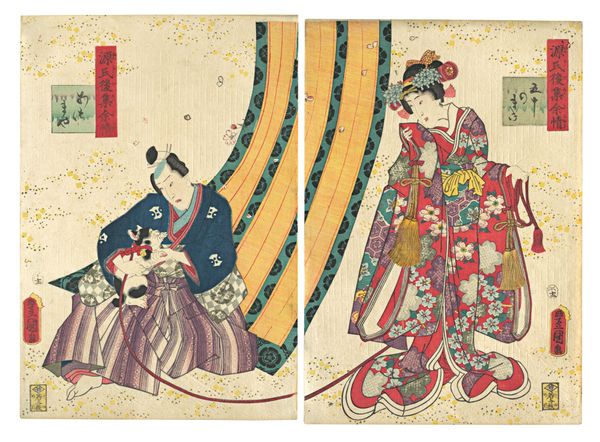
In the Room of a House of the Yoshiwara 1778 - 1798
0:00
0:00
#
toned paper
# print
#
asian-art
#
japan
#
personal sketchbook
#
ink drawing experimentation
#
men
#
sketchbook drawing
#
watercolour bleed
#
watercolour illustration
#
storyboard and sketchbook work
#
fashion sketch
#
sketchbook art
#
watercolor
Dimensions: Mat measurements: H. 22 3/4 in. (57.8 cm); W. 27 1/2 in. (69.9 cm)
Copyright: Public Domain
Editor: We are looking at "In the Room of a House of the Yoshiwara" by Katsukawa Shunko, made between 1778 and 1798. It’s a Japanese woodblock print. The figures almost look staged in separate frames. What draws your attention in this piece? Curator: The process of ukiyo-e production is quite telling here. The artist, the carver, and the printer were distinct laborers contributing to a collaborative final product meant for mass consumption. Each specialist imprinted their touch on the final artifact through a meticulous division of labor and their own expertise. Editor: Mass consumption? I would not have expected that from a print displayed in a museum! Curator: Yes! Ukiyo-e prints were part of the flourishing urban culture of Edo-period Japan. Notice how the sumptuous fabrics of the garments, likely imported, signal the financial status of these figures, indicative of burgeoning commercial economy. Think about how materials and production were circulated. Editor: So you're suggesting that even something we might see as "fine art" now was embedded in consumer culture then? What do you mean? Curator: Precisely. These prints weren’t necessarily ‘high art’ objects in their time. They functioned as a commodity that catered to a particular kind of lifestyle or aspirations that emerged with the growth of Edo’s urban merchant class. Who was it intended for, and what impact would that context have on what and how the artist created this work of art? Editor: So the prints are not just aesthetically pleasing but are also telling of the socio-economic conditions of the era through their production and consumption. The details in the materials depicted really solidify that, showing class through labor. I never considered it that way before! Curator: Right! This piece really invites us to examine the boundaries of what we consider 'art' and to understand it within a wider network of labor and materials.
Comments
No comments
Be the first to comment and join the conversation on the ultimate creative platform.
